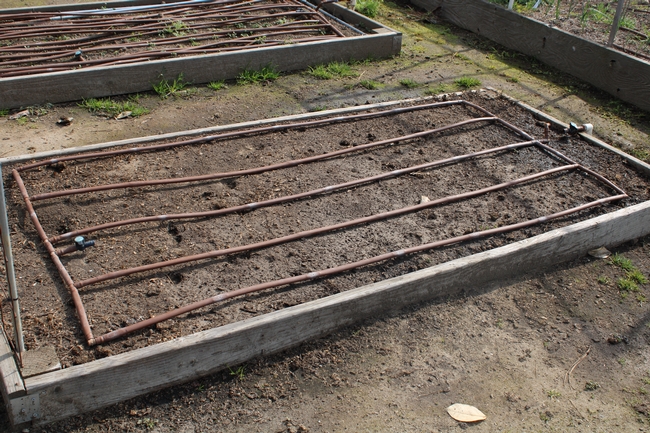As of the writing of this blog at the end of January, the Fresno/Clovis/Madera region has received only 2.79 inches of rain so far this water season, less that 25 percent of the yearly average of 11.01 inches. Unless the Central Valley receives heavy rainfall this spring, we will once again be experiencing severe drought conditions. NOAA scientists have recognized a correlation between drought periods and heat spikes. As the soil in the Valley dries out and warm dry air rises, high pressure domes form over our area, which causes temperatures to rise to extreme levels. We can anticipate that the Central Valley will also experience heat spikes along with the drought this year.
Our efforts to conserve water and also maintain the health and vigor of trees and plants in our gardens should begin in earnest this month.
There are quite a few types of irrigation devices easily available to home gardeners. Lawn sprinklers include both overhead and pop-up types. Up to 60 percent of the water applied by overhead sprinklers can be lost to evaporation, runoff and overly deep irrigation. Using pop-up or ground level sprinklers can minimize water loss somewhat. During drought periods and especially during heat spikes, irrigation of lawn grasses should be stopped or at least reduced to a bare minimum.

The amount of water and the irrigation pattern applied by emitters varies by emitter type. Choosing the right rate flow for each plant size and species and the best watering pattern is a very important part of irrigation design.
All types of irrigation systems should be on timers and those timers should be adjusted often to maintain soil moisture levels to the minimum needed to keep plants alive. When heat spikes are predicted, trees and plants should be deep irrigated before the spikes occur. Smart timers that are connected to the internet as well as local weather stations can be programmed and controlled by phone apps. Digital hose end timers can be programmed to turn on several times a day on a seven-day schedule with a rain mode option. There are simpler and cheaper hose end timer models as well. The old-school manually programmable timers as well as more advanced models that are wired to an electrical source are still available.
Sources:
California Agriculture magazine, UC Agriculture and Natural Resources